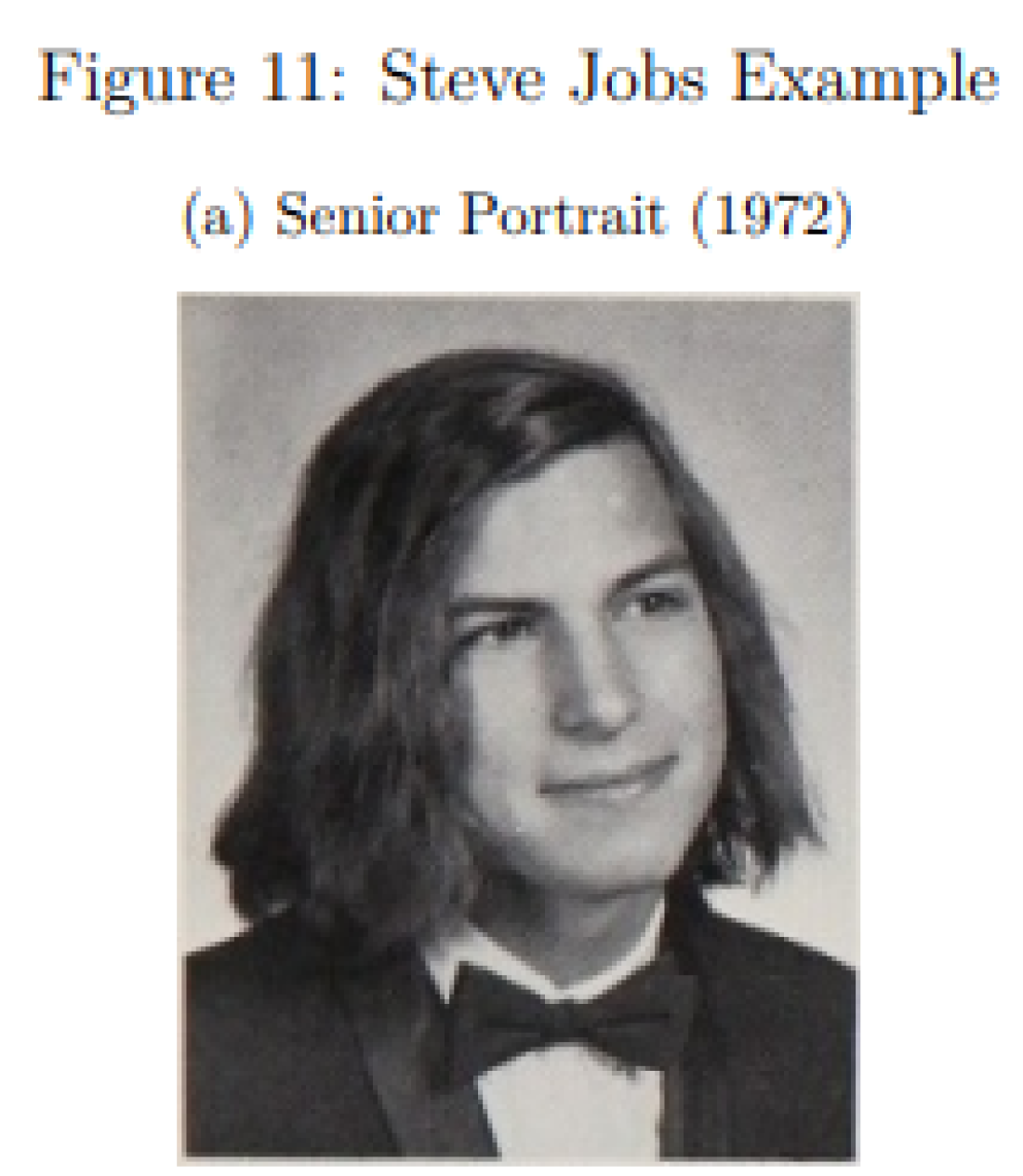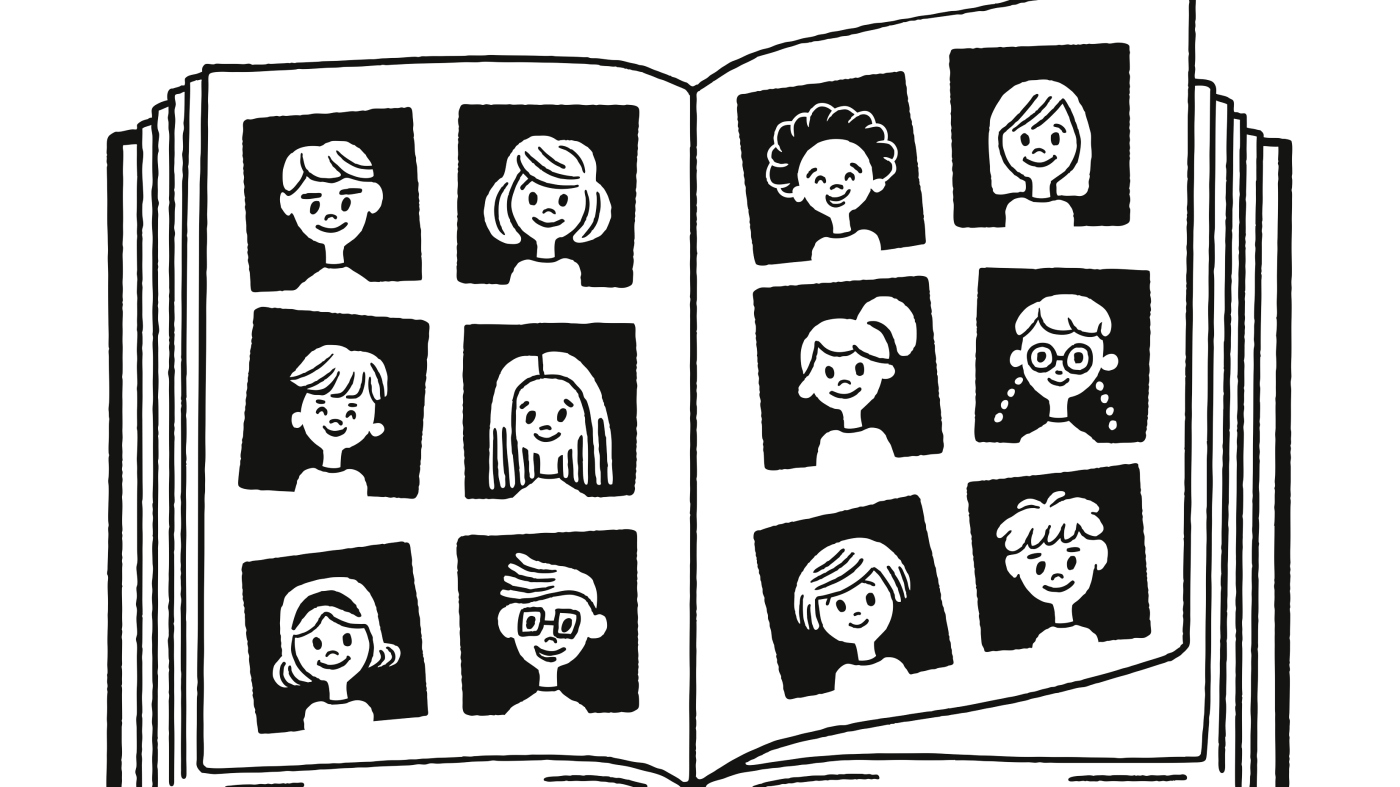CSA-Printstock/Getty Images
Imagine you’re about to get your high school yearbook picture taken and you really want to stand out. What would you wear to distinguish yourself from your classmates? Would bright pink lipstick, a cartoon print tie, or a blue steel pout do the trick? Perhaps all of those things in combination?
Economists can now answer this question using AI – and not only for you, but for every single person who graduated high school between 1930 and 2010!
In a recent paper titled “Image(s),” economists Hans-Joachim Voth and David Yanagizawa-Drott analyzed 14.5 million high school yearbook photos from all over the U.S. Their AI tool categorized each photo based on what people were wearing in it, like “suit”, “necklace”, or “glasses.” The researchers then used the AI outputs to analyze how fashion had changed over time.
Images have been used to study fashion before, but researchers have rarely been able to process so many photos and also classify them by the items of clothing worn in one go. By doing so, Voth and Yanagizawa-Drott have accomplished something no one has before: a comprehensive, data-driven analysis of the evolution of style, at least for graduating American high schoolers. The breadth of their data allowed them to document many different trends, some of which we already knew about, but also some that were really quite surprising.
An economist’s guide to fashion
So how did yearbook fashion evolve over time? If you were a yearbook photographer working in the 1950s, you would have taken picture after picture of clean-shaven young men in suits and ties with neatly trimmed hair. Young women were less predictable: many were starting to experiment with jewelry, short haircuts, and low necklines.
Fast-forward to the 1970s, and we land in a completely different fashion era. Young men become more adventurous with their clothing choices. Some grow their hair long, others don bow-ties or necklaces. Many young women opt for long hippie-style hair, and earrings start becoming more popular.
Among the fashion innovators of the time was Steve Jobs, who opted for a tux, bow tie, and long hair for his yearbook photo (yes, his photo was part of the study’s sample!). This look had rarely appeared in yearbook pictures before Jobs, but became popular soon after he wore it.

These fashion insights aren’t entirely novel, but rediscovering them with this new AI tool was important. By confirming things we already suspected to be true, like the fact that most young men opted for similar straight-laced looks for their yearbook photos in the fifties (suit, tie, collared shirt, short hair, no glasses, no jewelry, no facial hair), or the radical shift in fashion during the counterculture movement in the late sixties, Voth and Yanagizawa-Drott were able to show that their AI tool was correctly calibrated. Next, they moved onto documenting undiscovered patterns.
One style trait they studied was individualism: how much each student’s style differed from that of their classmates. They found that, in the thirties, young women were much more likely to dress differently from their peers relative to young men. But over time, this pattern switched. Young men started dressing in ways that made them stand out from their classmates more often, and young women did so less often. By the 2010s, men’s styles were more individualistic than women’s.
The opposite trend happened for persistence, another style trait the economists studied. Persistence measured how similarly each student dressed compared to people who had graduated from their high school 20 years ago. In the thirties, young men were considerably more likely to dress like their dads had for their yearbook photos, but by the 2010s it was young women who were more likely to dress like their moms.
The paper doesn’t explain why these shifts happened because you can’t really infer that from the data. But the authors provided us with some of their guesses. One reason could have been that it became more socially acceptable for men to experiment with fashion, which increased individualism. At the same time, women were entering the labor force in greater numbers and becoming more financially independent, which perhaps made it less important for young women to dress in ways that made them stand out to attract potential partners.
Another interesting discovery was how styles evolved in different regions. In the fifties, individualism and persistence were similar all over the country. That’s not to say that everyone was dressing the same, but rather that high school seniors were just as likely to stand out from their classmates or to dress like their parents did regardless of whether they were from New York, Alabama, or Texas.
But this began to change during the seventies. Generally speaking, high school seniors in the North became much more likely to dress differently from both their classmates and their parents than high school seniors in the South. They were also more likely to be style innovators, wearing looks that no one had seen before. By the nineties, levels of individualism and persistence in the North and South were completely different. These trends seemed to align with the political leanings of the regions (a more liberal North, a more conservative South), though the paper didn’t mention this correlation.
The economics of culture
“How is this economics?” is a question you might be wondering. What could fashion trends possibly tell us about the economy?
It turns out that they can tell us a lot. There’s a long tradition of economics turning to fashion analysis going back over a century. Economists have come up with concepts like the “snob effect” (when high demand for a product makes it appear less elite) and a “Veblen good” (when a high price tag makes a product appear prestigious, and therefore more desirable) to explain surprising purchase patterns, and have even created mathematical models to understand how fashion cycles work (for more on Veblen goods, listen to this episode of Planet Money).
In fact, the economic analysis of fashion often falls into a broader subfield of economics called cultural economics, which looks at the relationship between culture and economic outcomes. Since culture is notoriously difficult to define, cultural economists ended up studying everything from fashion and media to technology and institutions to social norms and values like trust and competitiveness.
For instance, one of the most surprising findings in this field came from a study which found that modern gender norms might have been influenced by the adoption of the plow. Plows are heavy and require much more strength to use than other early farming instruments like hoes and digging sticks. So, in societies that used the plow, men had a natural advantage in farmwork. This contributed to a gendered division of labor – men started disproportionately working in the fields while women worked in the home. And this division of labor in turn influenced beliefs about the appropriate roles of men and women in society.
By contrast, this didn’t happen as much in societies which didn’t adopt the plow. Men had no natural advantage in using other farming tools, so everyone there was involved in farmwork. There was no reason to think of work outside the home as “men’s work”, so gender norms regarding work developed differently too. Amazingly, economists found that these historical differences affect gender norms to this day. It turns out that societies that did not adopt the plow still have higher gender equality and higher female labor force participation!
A new frontier for economics
Returning to our original paper, what can we learn from millions of high school yearbook photos? To start, Voth and Yanagizawa-Drott’s paper shows the potential of using images to study how culture changes. Turning photos into a huge dataset that covers the entire country allows us to precisely track where change starts, how it spreads, and which communities resist it. Voth and Yanagizawa-Drott’s analysis gave us a new way of studying the counterculture movement of the sixties, for instance.
But mostly, we’re still just beginning to understand what we can learn from this work. Image(s) provided a proof-of-concept: it showed that it is possible to turn images into data by having AI identify different elements within each picture. And proof-of-concept studies tend to open more doors than they close.
Perhaps future research will be able to connect the stylistic shifts which Voth and Yanagizawa-Drott discovered to specific social, political, or economic developments and arrive at a better understanding of our history. Perhaps there will be commercial interest in such approaches, which could allow fashion brands to learn more about what people are wearing than they were ever able to know before. And it’s also likely that researchers will apply this method to study many other questions in cultural economics and other fields.
One thing is clear, however: as the number of images we see and interact with each day grows exponentially larger (thanks to the usual culprits – social media and the ever-expanding number of screens that we use all the time), our ability to learn from those images will increase too. It remains to be seen what else we might discover.
